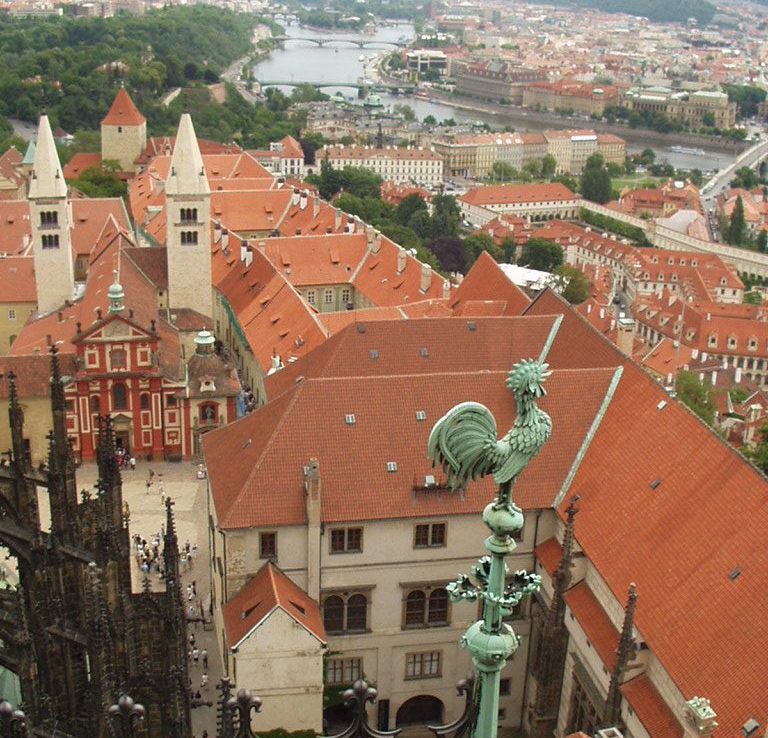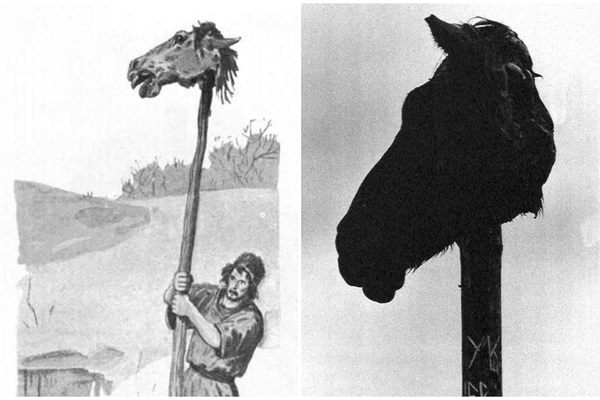4 Vaguely Historic Anniversaries We Overlooked in 2018
Our bad.

The year 2018, on its own, left a lot to be desired. The apocalypse was proclaimed, romaine lettuce was sullied, Cardi B and Offset broke up—wherever you stand, it seems, it’s high time to wave in 2019. Hell, scientists even published a study positioning the mid-6th century as the worst time to be alive, as if to distract us from our own reality. But in these waning days, there’s one thing we can do to reclaim the year, and preserve whatever good it had to offer: We can focus on the litany of wacky, random, and overlooked anniversaries that can’t be credibly observed for another five years.
1518: The Dancing Plague of Strasbourg

First, let’s moonwalk back 500 years to the town of Strasbourg, now in northeastern France, where in July 1518 a most bizarre plague took hold. It all started when one Frau Troffea, a 16th-century precursor to Martha and the Vandellas, started dancing in the street. On she went, alone, until she collapsed—after which she simply resumed, and with company. Within the space of a week, more than 30 people had joined Troffea in her public grooving, and by the end of September, some 400 locals were participating. Clueless of how they could control this unprovoked outburst, local authorities decided to assist the dancers, hoping that they’d get their fill and give it up. The city organized designated dancing spaces, and even hired professional musicians and dancers to guide the masses’ steps. They had to do something, after all: According to the BBC, when the dancing plague was at its most intense, as many as 15 people were dying per day due to “strokes, heart attacks, and sheer exhaustion.”

No one will ever know for sure what prompted the dancing plague. Guesses from 1518—that the dancers had “hot blood,” or else were possessed by demons—don’t really hold up. A more credible explanation comes from the historian John Waller. He suggests that the dancers may have believed themselves to be compelled by Saint Vitus—the patron saint of dancers, who was thought to curse people into forced dancing. The perception of a curse could have marked some kind of stressed-out reaction to recent famines in the area, and outbreaks of other diseases.
1618: The Second Defenestration of Prague

Defenestration, n.: “a throwing of a person or thing out of a window.” This word (defined here by Merriam-Webster) looms largely in one of the more destructive chapters of European history.
The defenestration itself, thankfully, didn’t do too much harm (there were no casualties). Four hundred years ago, two Protestants from Bohemia (the Western half of modern-day Czechia) took it upon themselves to chuck three regents of the Catholic Habsburg authorities from the windows of the Prague Castle. It was punishment for a wave of closures of Protestant chapels, said (rightly) to violate the 1609 Letter of Majesty, which guaranteed religious freedom within Bohemia (for Protestants and Catholics, anyway). The defenestration was an electrifying act of protest that raised the temperature even higher, before tensions boiled over into the Thirty Years’ War. During that conflict, which took place between 1618 and 1648, different religious and political groups vied for control of central Europe, killing more than eight million people in the process.
There’s something about Prague that just drives dissidents towards defenestration. The city’s first defenestration had taken place in 1419, when religious protesters threw city councillors out of the windows of the New Town Hall, killing seven of them. The event was significantly deadlier, if much less historic.
1768: The Chinese Sorcery Scare

And now for some 250-year-old magic. In 1768, China was overtaken by fear of jiao hun, or “soul stealing.” As Philip A. Kuhn explains in his book Soulstealers: The Chinese Sorcery Scare of 1768, it all started with a crew of workers repairing a gate outside Deqing, in the east. Rumor had it that the workers were attaching small sheets of paper, inscribed with people’s names, to the tops of the wooden piles they hammered into the river. The act was said to endow the workers with control over those individuals—and before long, other means of thievery had come into use.
One involved mi yao, “stupefying powder” thrown into people’s faces to distract them as the soul thieves cut off their queues, the long braids commonly worn by men at the time. The right incantations, it was feared, could turn a queue into a remote control for someone’s soul, and men all over the place were finding theirs abruptly severed: People were waking up without them, and having them snitched from behind while urinating. Some feared that, if a sorcerer wrapped a severed queue around a human-shaped cutout, the tiny piece of paper could come to life and be deployed for evil deeds. It was not only an issue of security, but also of politics: The queue represented a sign of deference to the Emperor (forgoing the braid could end in decapitation), who was naturally compelled to respond strongly to this mysterious outbreak of dark and rebellious activity.
1818: The Dandy Horse Gallops Onto the Scene

By which, of course, we mean the first bicycle. The dandy horse was the first human-powered, two-wheeled vehicle, and at first glance, it looks an awful lot like the modern bike—just more wooden, and rickety, and unbearably uncomfortable. But it’s missing a rather significant component: There are no pedals, and riders had to operate the dandy horse by walking it along, gathering speed until they could coast for a while. We’re not entirely sure where the name comes from, but there’s no doubting that it beats the other monikers: Laufmaschine (German for “running machine”) and draisine (for Karl Drais, the German inventor who created the dandy horse in Mannheim).
Drais’ invention, patented in 1818, was quickly supplanted by more advanced takes on his concept, though the modern balance bikes on which many children learn to ride are essentially the same thing. Rudimentary though it may have been, the dandy horse fomented a revolution in transportation, and marked a high point in the history of naming inventions.
Well, 2018, you did good, as far as your arbitrary connection to esoteric history goes. One day, we’ll be able to look back on some of your own stuff and laugh.











Follow us on Twitter to get the latest on the world's hidden wonders.
Like us on Facebook to get the latest on the world's hidden wonders.
Follow us on Twitter Like us on Facebook